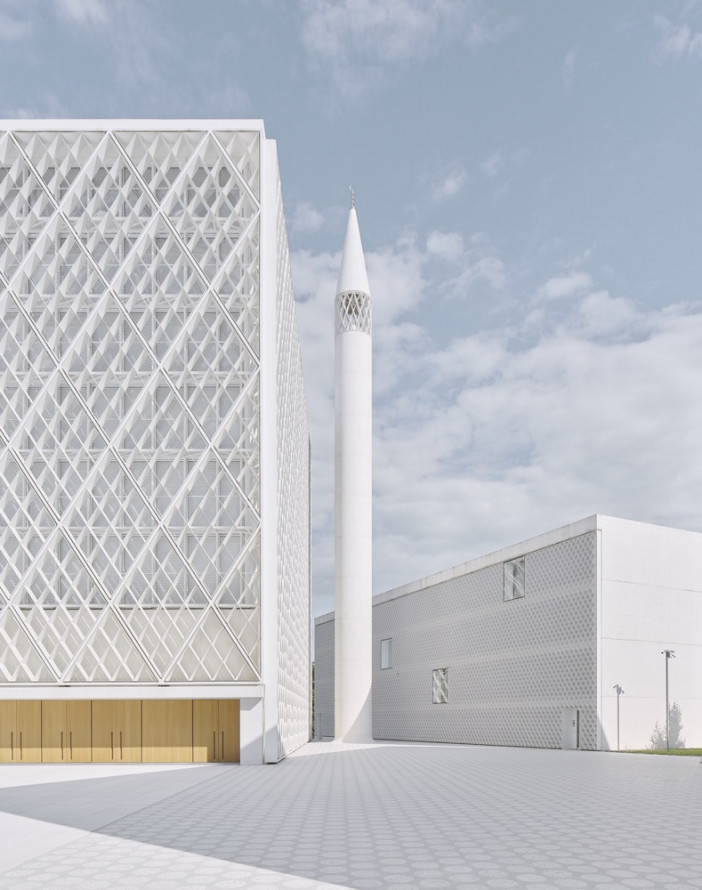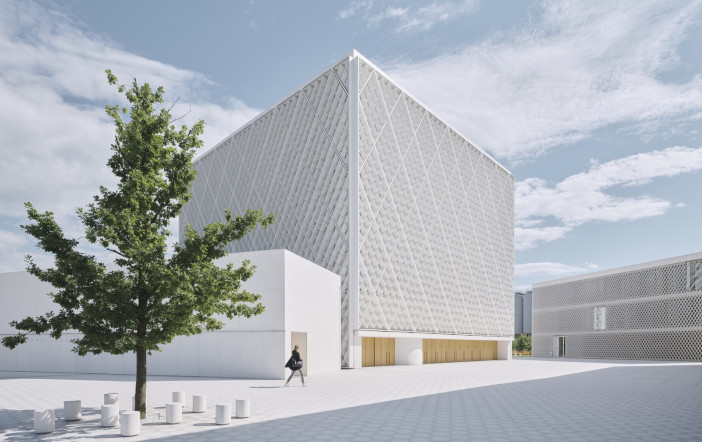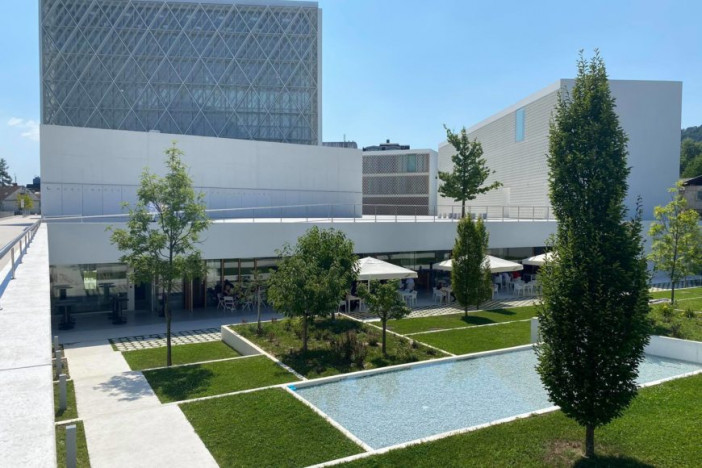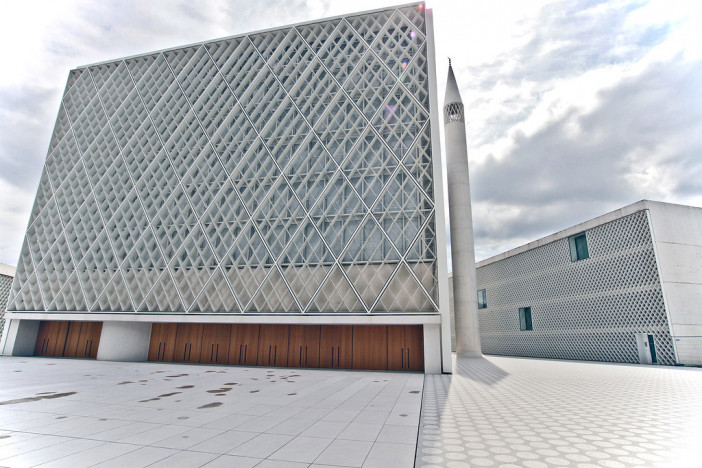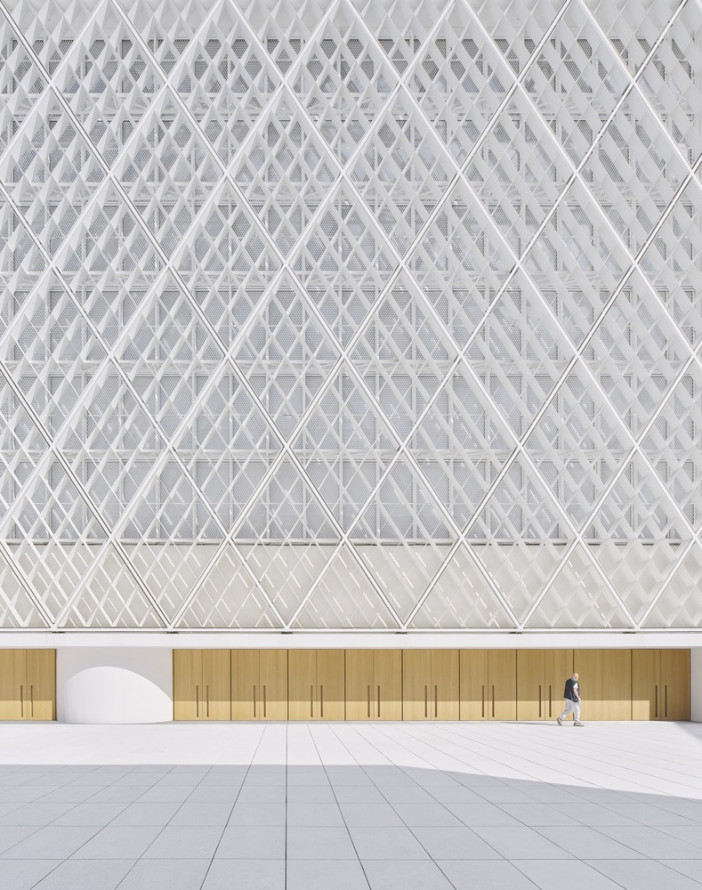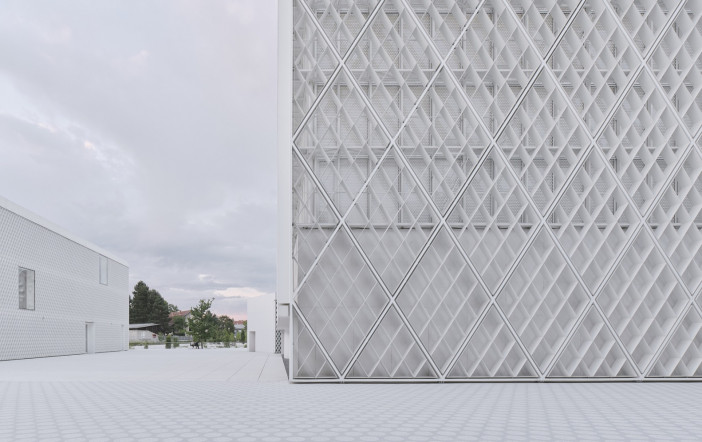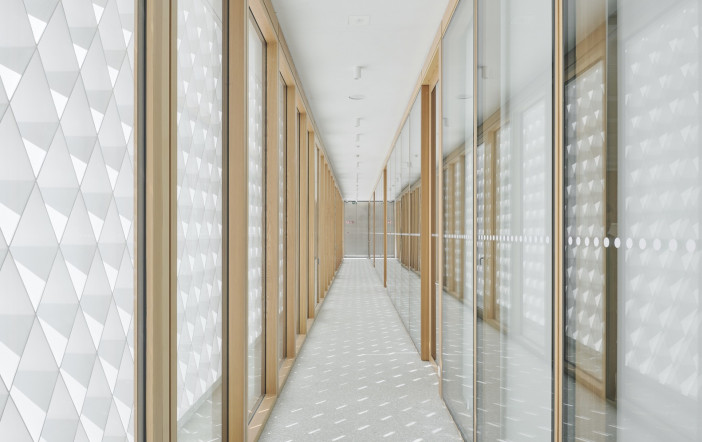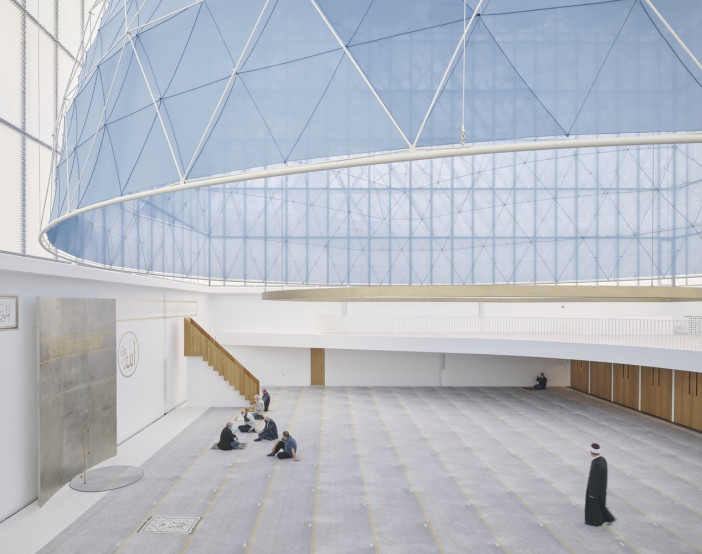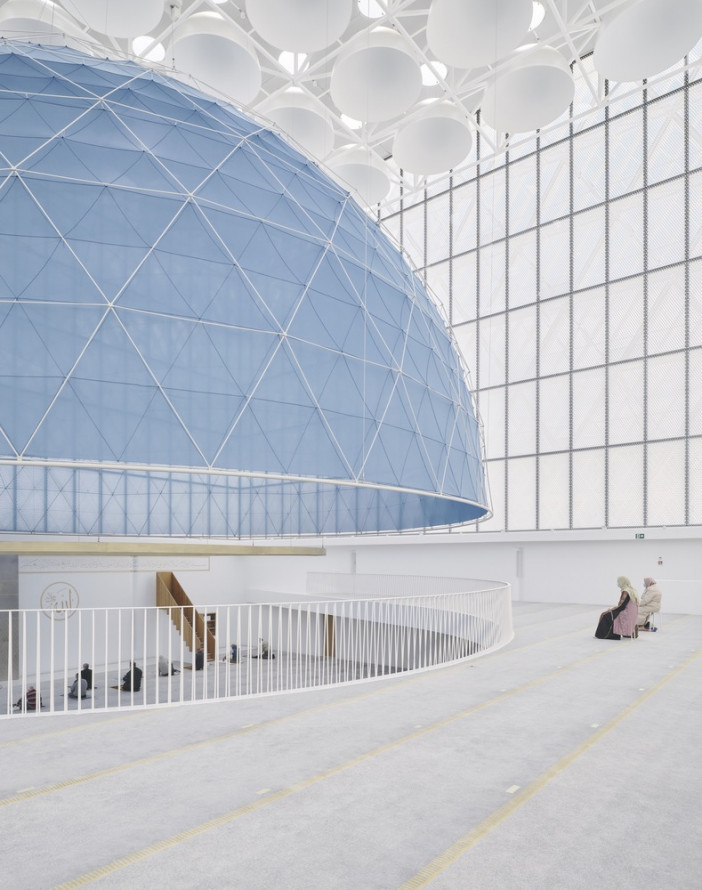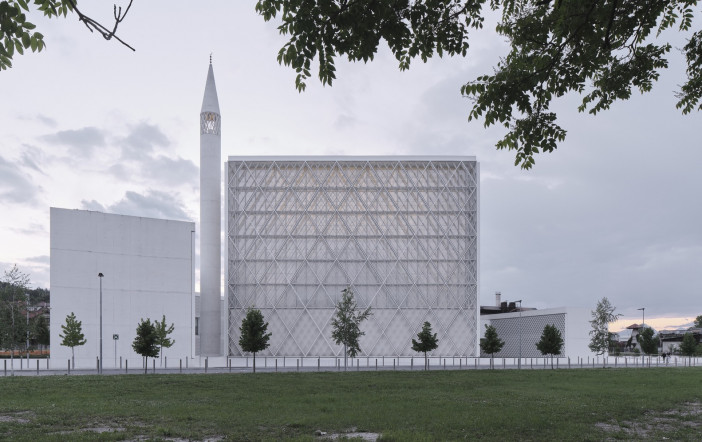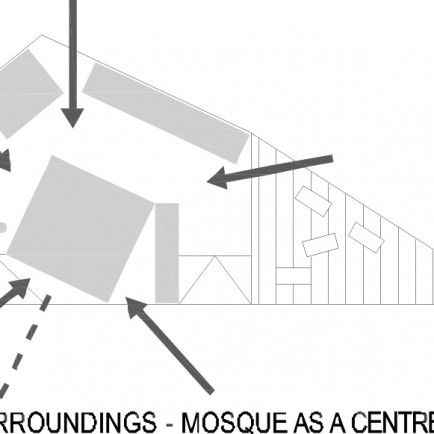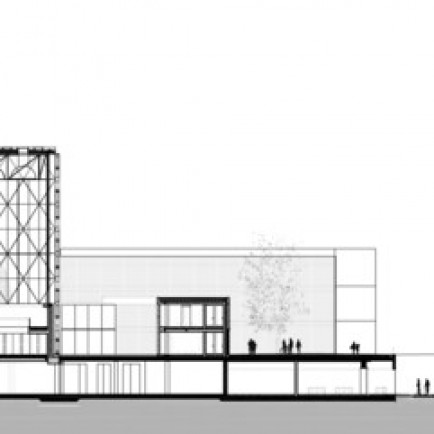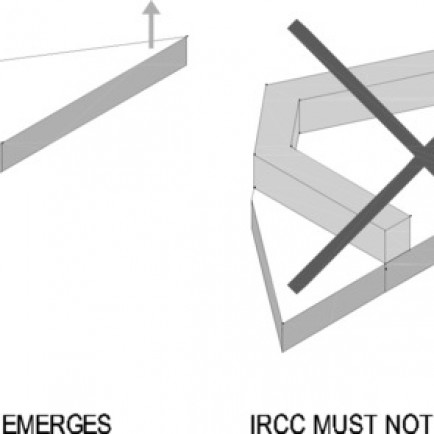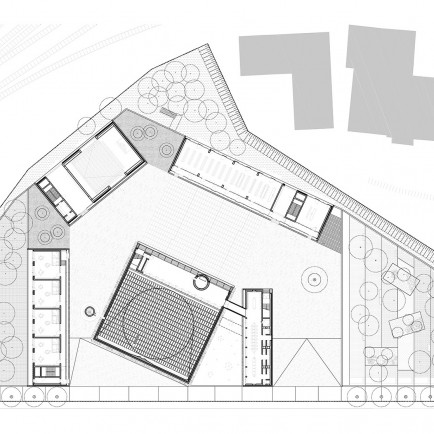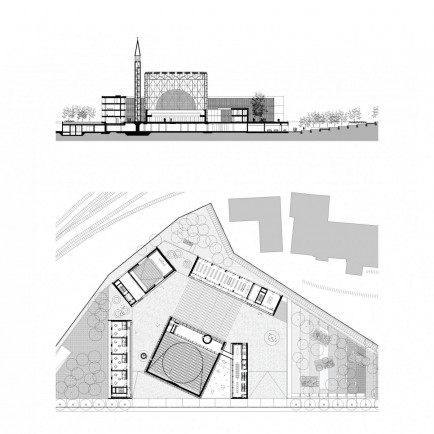Islamic Religious and Cultural Center
History
Many Muslims were among the wave of internal migrants from other Yugoslav republics who gravitated to Slovenia during the 1960s and 1970s. A permit for the construction of a mosque was first requested in 1969, but was not granted; the effort was revived during the 1990s. The 1990s proposal produced a nationalist backlash, with considerable public opposition to the mosque. The City Council made an attempt to call a municipal referendum to prohibit the construction of the mosque in late 2003. Opposed by Ljubljana mayor Danica Simšič as a "constitutionally-forbidden encroachment on the constitutionally-guaranteed rights of a religious minority", the referendum was rejected by the Constitutional Court in July 2004. In December 2008, city councilor Mihael Jarc began gathering signatures for a second referendum, this time to delete the mosque's proposed 40 m minaret, over the opposition of mayor Zoran Janković. This time the Constitutional Court approved the signature-gathering process; the mayor however vowed to continue to fight it.
The reaction among the-then prominent national political parties was mixed; LDS and Zares voiced support for the construction of the mosque; SD, DESUS and SDS remained neutral on the matter, while SNS expressed opposition.
A ceremony was held at the future site of the complex in September 2013 to lay the foundation stone. Construction is expected to begin in November and last about three years.
In February 2020, the mosque was completed and opened to the public.
Urban and Architectural
The programme of the centre consists of a religious school building, a cultural and office programme, an apartment building for the employees of the community, a restaurant, as well as the mosque, the first one to be built in Slovenia, all of them supported by car parking in the basement.
The mosque, sitting on and opening fully towards the square to allow for extension of the prayer space on the outside during large gatherings of congregation, is the central element of the new complex. Rather than following obvious historical precedents, as well as the recent iconographically obvious examples, it is conceived as a steel structure – a 32/32/24 metre box constructed of 1-meter (45cm) deep and only 2 (8cm) centimetre thick steel latticework, filled with white concrete on the lower part, and transparent glass on the upper part, allowing for the sun to flood the interior space.
Description
The ‘specificity’ of the new location for the Islamic Religious and Cultural Centre is precisely its complete lack of ‘specificity’ – an area that is near the city centre, but abandoned and forgotten, in a fragile undeveloped state, with an uncertain urban future. Much like its historical predecessors – the case of Sarajevo mosques during 19th century being a nearby example, where mosque complexes – built by rich donors – were the starting points, the ‘seeds’ for the development of the new parts of the city, the new complex becomes one such thing for this part of Ljubljana.
References
Details
Location
Džamijska ul. 10, 1000 Ljubljana, SLOVENIA
Worshippers
720 male 200 female
Owners
Islamic Community in the Republic of Slovenia
Architect Name
Year of Build
2020
Area
14080 m²
Drawings
Map
History
Many Muslims were among the wave of internal migrants from other Yugoslav republics who gravitated to Slovenia during the 1960s and 1970s. A permit for the construction of a mosque was first requested in 1969, but was not granted; the effort was revived during the 1990s. The 1990s proposal produced a nationalist backlash, with considerable public opposition to the mosque. The City Council made an attempt to call a municipal referendum to prohibit the construction of the mosque in late 2003. Opposed by Ljubljana mayor Danica Simšič as a "constitutionally-forbidden encroachment on the constitutionally-guaranteed rights of a religious minority", the referendum was rejected by the Constitutional Court in July 2004. In December 2008, city councilor Mihael Jarc began gathering signatures for a second referendum, this time to delete the mosque's proposed 40 m minaret, over the opposition of mayor Zoran Janković. This time the Constitutional Court approved the signature-gathering process; the mayor however vowed to continue to fight it.
The reaction among the-then prominent national political parties was mixed; LDS and Zares voiced support for the construction of the mosque; SD, DESUS and SDS remained neutral on the matter, while SNS expressed opposition.
A ceremony was held at the future site of the complex in September 2013 to lay the foundation stone. Construction is expected to begin in November and last about three years.
In February 2020, the mosque was completed and opened to the public.
Urban and Architectural
The programme of the centre consists of a religious school building, a cultural and office programme, an apartment building for the employees of the community, a restaurant, as well as the mosque, the first one to be built in Slovenia, all of them supported by car parking in the basement.
The mosque, sitting on and opening fully towards the square to allow for extension of the prayer space on the outside during large gatherings of congregation, is the central element of the new complex. Rather than following obvious historical precedents, as well as the recent iconographically obvious examples, it is conceived as a steel structure – a 32/32/24 metre box constructed of 1-meter (45cm) deep and only 2 (8cm) centimetre thick steel latticework, filled with white concrete on the lower part, and transparent glass on the upper part, allowing for the sun to flood the interior space.
Description
The ‘specificity’ of the new location for the Islamic Religious and Cultural Centre is precisely its complete lack of ‘specificity’ – an area that is near the city centre, but abandoned and forgotten, in a fragile undeveloped state, with an uncertain urban future. Much like its historical predecessors – the case of Sarajevo mosques during 19th century being a nearby example, where mosque complexes – built by rich donors – were the starting points, the ‘seeds’ for the development of the new parts of the city, the new complex becomes one such thing for this part of Ljubljana.


